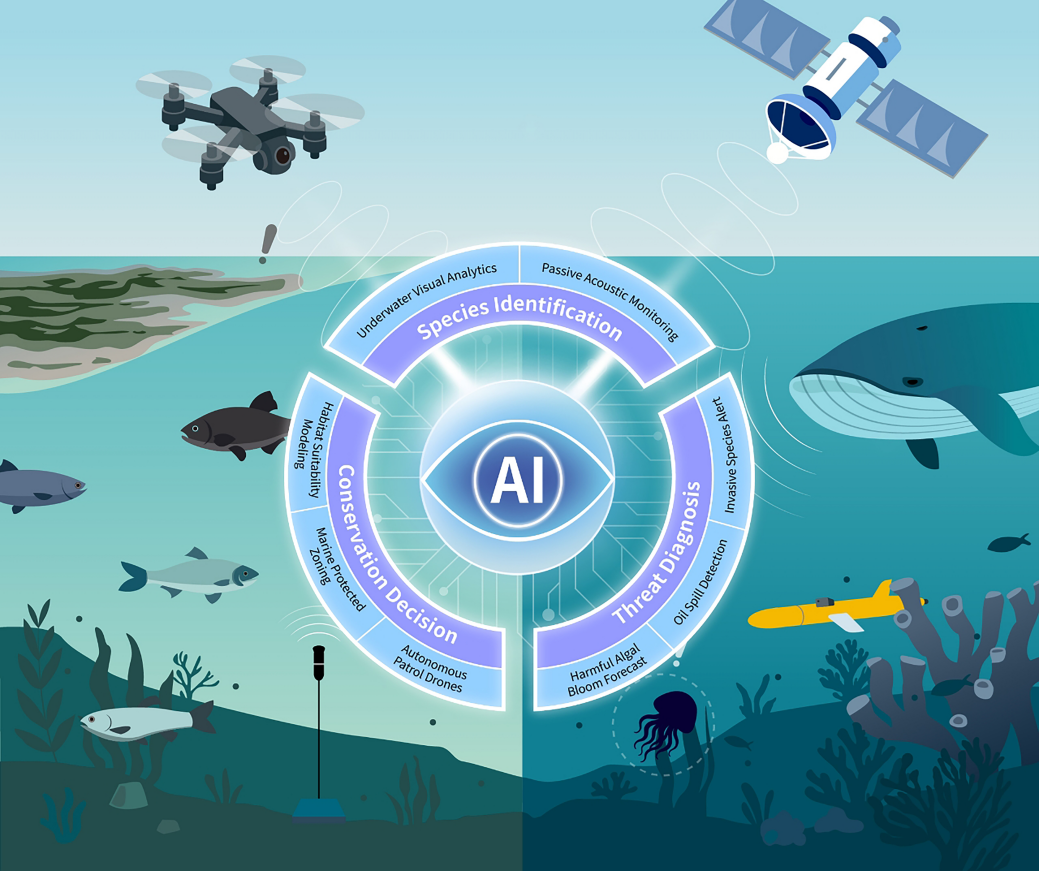Artificial Intelligence for Identifying and Conserving Aquatic Species
Published 18 July, 2025
In a review published in the KeAi journal Water and Ecology, a team of researchers in China systematically summarized the current applications and challenges of machine learning algorithms in image analysis, acoustic identification, and ecological threat detection in the field of aquatic biology. The main findings are presented as follows.
- Innovations and breakthroughs of artificial intelligence (AI) in aquatic species identification
Deep learning models such as as convolutional neural network (CNN) and recurrent neural network (RNN) have been extensively applied to the analysis of aquatic species imagery and acoustic data, enhancing identification accuracy and real-time capabilities. For instance, CNNs have achieved unprecedented precision in analyzing fish schooling behavior, automating microalgae identification, and assessing coral reef health. RNNs have also shown exceptional capability in classifying cetacean acoustic signals, enabling real-time and automated tracking of species movements.
- AI-driven refinement of aquatic species conservation management
The deep integration of remote sensing technologies and AI algorithms has refined and enhanced the intelligence of aquatic species conservation strategies. By leveraging AI for the analysis of remote sensing data, it is now possible to proactively warn of harmful algal blooms, water pollution incidents, and invasive species distribution trends. Additionally, AI-driven automated monitoring systems can continuously track species distribution changes and ecological conditions, supporting the delineation of protected areas and optimal allocation of conservation resources.
- Challenges and future prospects for AI in aquatic ecosystem conservation
Challenges such as insufficient data availability, varying data quality, and limited generalizability of models still constrain the effective application of AI in aquatic ecosystem conservation. To overcome these barriers, the authors advocate for the establishment of interdisciplinary, regionally inclusive ecological data-sharing platforms to provide high-quality training data. Further integration of AI techniques with environmental DNA (eDNA) and molecular ecology is recommended to enhance the interpretability and generalization capabilities of AI models.

Contact author name:
Zhenbin Wu
-State Key Laboratory of Breeding Biotechnology and Sustainable Aquaculture, Institute of Hydrobiology, Chinese Academy of Sciences, Wuhan 430072, China
Conflict of interest: The authors declare that they have no known competing financial interests or personal relationships that could have appeared to influence the work reported in this paper.
See the article: